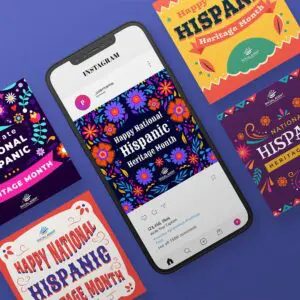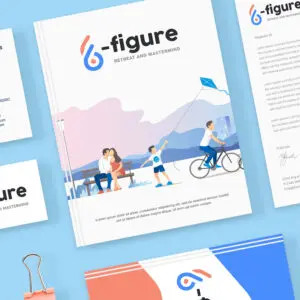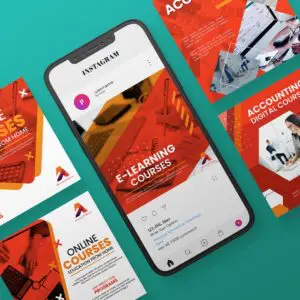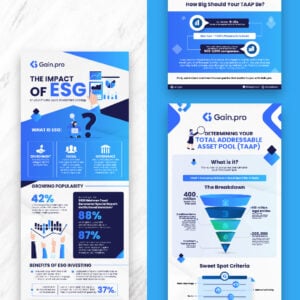
Gone are the days when following up on leads felt like looking at a crystal ball for answers. With predictive lead scoring, you can now increase your revenue by using data to prioritize leads who are most likely to convert.
If you’re new to the concept of predictive lead scoring, you’ve come to the right place! In this article, we’ll discuss what it is and how to leverage it to laser-focus your marketing strategies.
What is Predictive Lead Scoring?
Predictive lead scoring is a process that uses machine learning and statistical algorithms to analyze various data points about potential customers and calculate a score that predicts how likely each lead is to convert into a customer.
These data points may include:
- Behavior on a website
- Interaction with marketing materials
- Demographic information
In the traditional method, leads were scored using basic metrics like demographic information, direct engagements, or even gut instincts. It goes without saying that such processes lack the dynamic adaptability and depth of insight provided by predictive models.
In short, traditional lead scoring might seem like navigating with a compass when you could be using GPS. That said, it’s not surprising that many marketers take the time to learn about predictive lead scoring, along with the best AI courses available online.
Data from 6sense states that more than 492,000 businesses have adopted tools for predictive lead scoring. This number highlights how this method has become a reliable tool for enhancing sales efficiency and marketing precision across various industries.
How Predictive Lead Scoring Works
What is the lead scoring technique? At its core, the process involves a few stages, all underpinned by the advanced capabilities of machine learning and artificial intelligence (AI).
Stage 1: Data Collection
The process begins with a comprehensive compilation of interactions, behaviors, and demographics related to potential customers. This data can come from your data bank and from external sources. From how a user navigates a website to their responses to email campaigns and even broader data points like industry sector or company size, every piece of information is a note in the larger symphony of lead scoring.
Stage 2: Analysis
Once the data is collected, the next phase is analysis. This is where predictive lead scoring machine learning and AI take center stage, transforming raw data into insights. By examining patterns, trends, and correlations within the data, these technologies can identify which characteristics and behaviors indicate a lead’s likelihood to convert. As more data becomes available, the system refines its predictions, becoming more accurate in its assessments.
Stage 3: Scoring
What is a predictive score? Based on the insights from the analysis, each lead is assigned a score that represents their potential value to the business. A high score indicates a lead that is highly likely to convert, signaling to sales and marketing teams where to focus their efforts for maximum impact.
What is the scoring system for leads? The scoring is typically done using predefined models to dynamically adjust the criteria based on lead conversion patterns.
Stage 4: Segmentation, Ordering, Prioritization
Scored leads undergo segmentation, categorizing them into various segments, and are further ordered or ranked based on their scores and other relevant factors. Prioritization, meanwhile, strategically allocates resources and effort toward the leads deemed most valuable. This stage allows for a more tailored approach to marketing and sales strategies.
Armed with detailed insights from the preceding phases, sales and marketing teams can now proceed to engage with leads in a highly informed and strategic manner. Actions can range from a number of tactics, possibly using AI marketing tools or more traditional tools.
Key Players in Predictive Lead Scoring Software
Data from 6sense reveals that Salesforce CRM dominates the predictive lead scoring space, holding a 29.57% market share, followed by Pardot, which captures 7.44% of the market, and HubSpot CRM, securing a 6.38% market share.
Also included among the top providers are Marketo and Leadfeeder. However, it’s vital to note that other providers make up a big slice of the pie – 45% – so feel free to explore platforms other than those in the chart.
Here’s an overview of some of the key players in predictive lead scoring software:
1. Salesforce
Salesforce’s scoring is part of its comprehensive suite of sales and marketing tools, ensuring a seamless workflow. It leverages artificial intelligence to analyze lead behavior and predict conversion likelihood, and users can create custom scoring models based on historical data and business context.
2. Pardot
Pardot, a Salesforce product, specializes in B2B marketing automation and lead management. Its predictive lead scoring capabilities enhance lead nurturing and conversion.
3. HubSpot
HubSpot’s predictive lead scoring offers several features and benefits, including lead prioritization. Learning how to use HubSpot CRM efficiently will allow you to make the most out of its features, including its customizable scoring criteria and integration with its CRM system.
4. Marketo
Marketo, now part of Adobe Experience Cloud, offers predictive lead scoring to help marketers identify high-value leads and optimize campaign targeting.
5. Leadfeeder
Leadfeeder focuses on website visitor tracking and lead generation. While not purely predictive, it provides valuable insights for identifying potential leads.
The Indispensable Human Element in Predictive Lead Scoring
Just as human designers are irreplaceable in professional graphic design despite the emergence of AI image generators, the human touch is indispensable in sales and marketing, even with the growing popularity of predictive lead scoring.
Yes, predictive lead scoring can identify potential high-value leads, but direct communication is often required to understand factors like:
- Specific needs
- Pain points
- Motivations
Sales and marketing professionals can use their insights and experience to ask the right questions, listen actively, and tailor their approach to meet the unique needs of each lead.
The combination of sophisticated technology and human insight offers the best of both worlds, ensuring that businesses can not only identify their most promising leads but also engage with them in a meaningful, effective manner.
About the author

Carla Deña
Carla is a journalist and content writer who produces stories for both digital and legacy media. She is passionate about creativity, innovation, and helping small businesses explore solutions that drive growth and social impact.





















